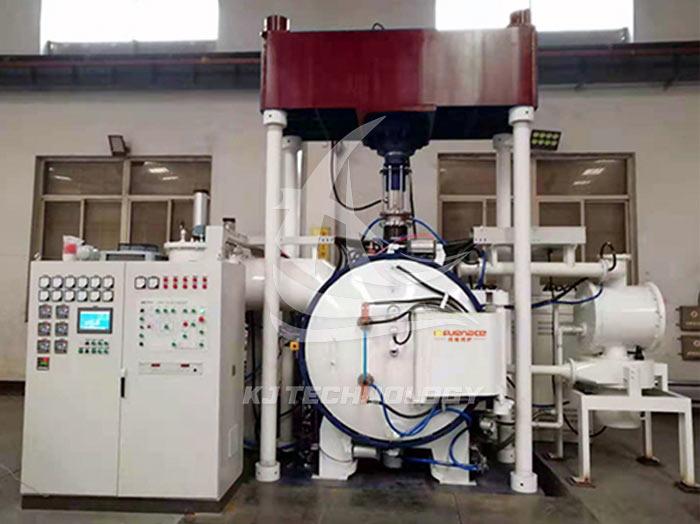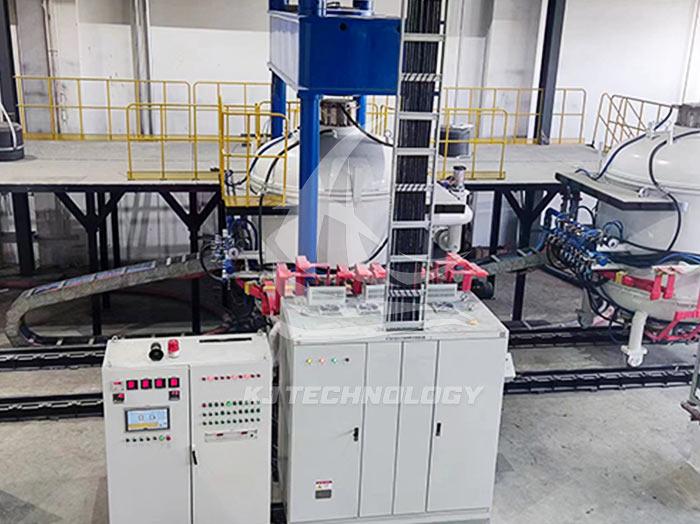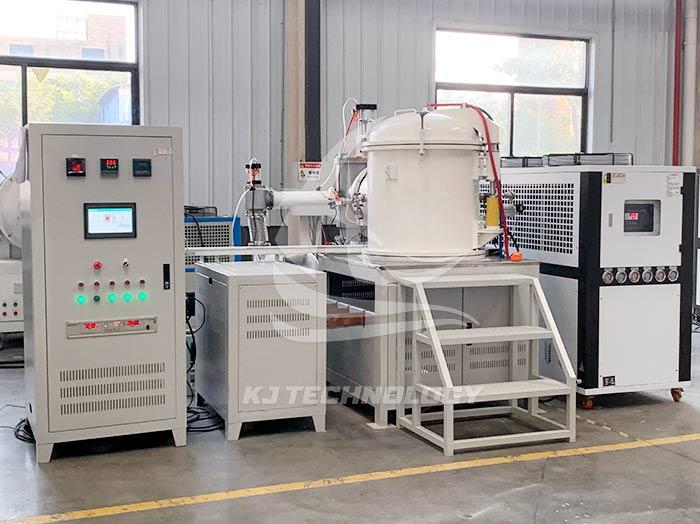What are the heating elements of vacuum atmosphere heat treatment furnace?
 07-14-2025 Author: KJ technology
07-14-2025 Author: KJ technology
The heating elements of vacuum atmosphere heat treatment furnaces mainly include the following types, each with its own characteristics and suitable for different temperature ranges and process requirements:
1. Metal type heating element:
Nickel chromium alloy and iron chromium aluminum alloy:
These two alloy materials have high electrical resistivity and stable temperature coefficient of resistance, corrosion resistance, and excellent surface oxidation resistance. The rated operating temperature of nickel chromium alloy and iron chromium aluminum alloy in air is 1100~1300 ℃, but the rated temperature needs to be reduced in vacuum environment to extend their service life. Iron chromium aluminum alloy can form a protective film through pre oxidation treatment to enhance its durability in vacuum environments; Nickel chromium alloy does not require a protective film and can still be used stably in vacuum up to 1130~1170 ℃.
2. Refractory metal materials:
Molybdenum (Mo): Suitable for vacuum furnaces at 1000-1600 ℃, often using wire or sheet as the heating element.
Tantalum (Ta): It has better processing performance than molybdenum, can be welded, and the scraps can be recycled, but it is expensive and cannot be used in a hydrogen atmosphere. It is usually only used as a heating element under special requirements.
Tungsten (W): The rated temperature can reach 2400-2500 ℃, but it has a brittle texture, poor impact resistance, and is prone to cracking during processing, resulting in a low yield rate.
3. Non metallic heating elements:
Graphite:
Graphite has characteristics such as high temperature resistance, low coefficient of thermal expansion, and strong resistance to thermal shock. Its mechanical strength increases with temperature below 2500 ℃ and reaches its optimal state around 1700 ℃. Graphite electric heating elements have strong radiation ability (with a blackness of 0.95), low cost, and easy processing. However, graphite is prone to volatilization in a vacuum environment, forming a carbon environment, which limits its application in processes that require avoiding carburizing or carbon reactions.
4. Other heating elements:
Silicon carbide:
Silicon carbon rods have the characteristics of high temperature resistance, oxidation resistance, and long service life, and are suitable for vacuum furnaces in the medium to high temperature range. For example, the HTAF-1400-12 vacuum atmosphere furnace uses silicon carbon rods as heating elements, with a normal operating temperature of 1300 ℃ and a maximum of 1400 ℃.
Silicon molybdenum rod:
Silicon molybdenum rods have excellent oxidation resistance and thermal shock resistance at high temperatures, making them suitable for vacuum furnaces at higher temperatures. For example, a 1200 ℃ mini vacuum atmosphere tube furnace will use silicon molybdenum rods as heating elements in high-temperature scenarios.








